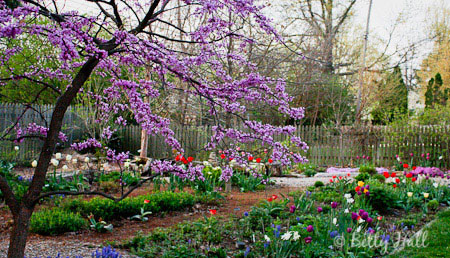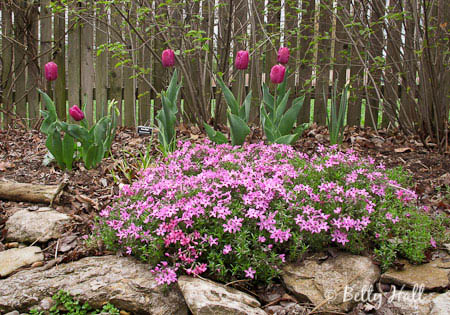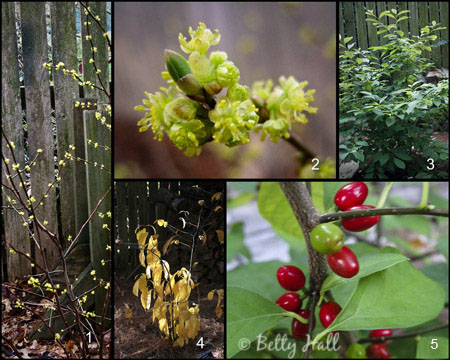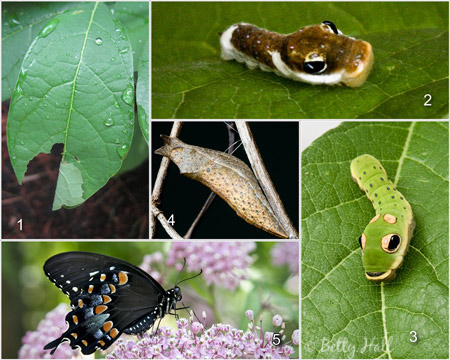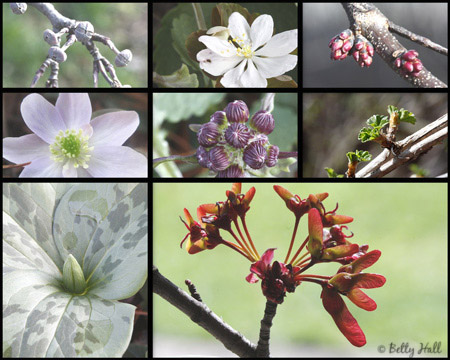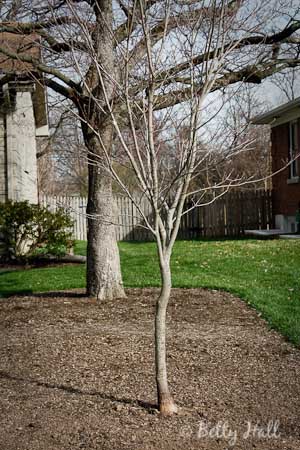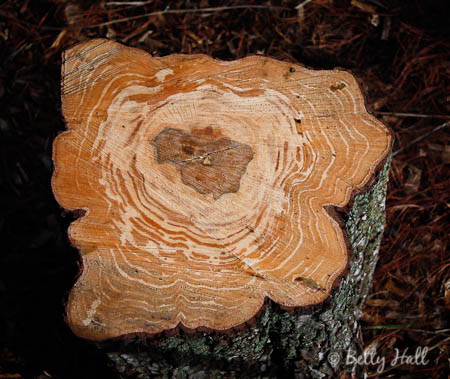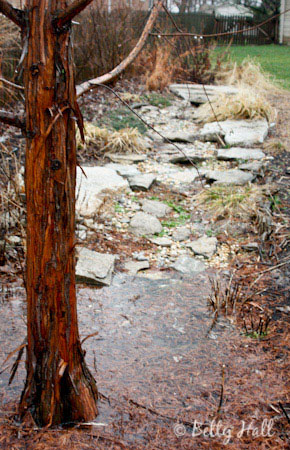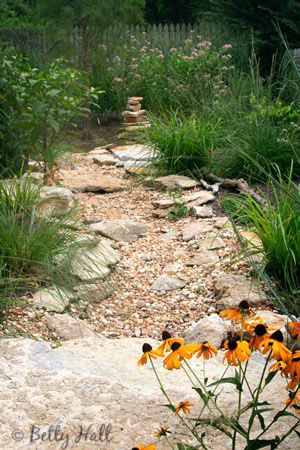There’s a lot happening in the backyard these days. However, it’s the redbud and tulips that are attracting attention. I’m taking a fair amount of ribbing from friends about my non-native tulips. Nevertheless, I’m enjoying them immensely. They were planted, at my request, by my good friend and landscaper, Beate Popkins.
Carolyn Summers’ recent book, Designing Gardens with Flora of the American East, is an excellent resource and I heartily recommend it to anyone interested in landscaping with native plants. I like her idea that “the ultimate landscape goal is a stunningly beautiful garden with an abundance of native plants along with occasional non-natives that have sentimental or historical value to the gardener.” I focus on native plants because they are attractive, hearty, and provide important food for wildlife including birds, butterflies, and other insects. I’m also glad to include some non-natives. These tulips and native creeping phlox seem quite happy together.
Some non-natives are invasive to the point of crowding out native plants. Summers suggests a good motto for responsible gardeners is “What grows in my garden stays in my garden.” My tulips will not stray and I enjoy their bright colors and graceful form.

